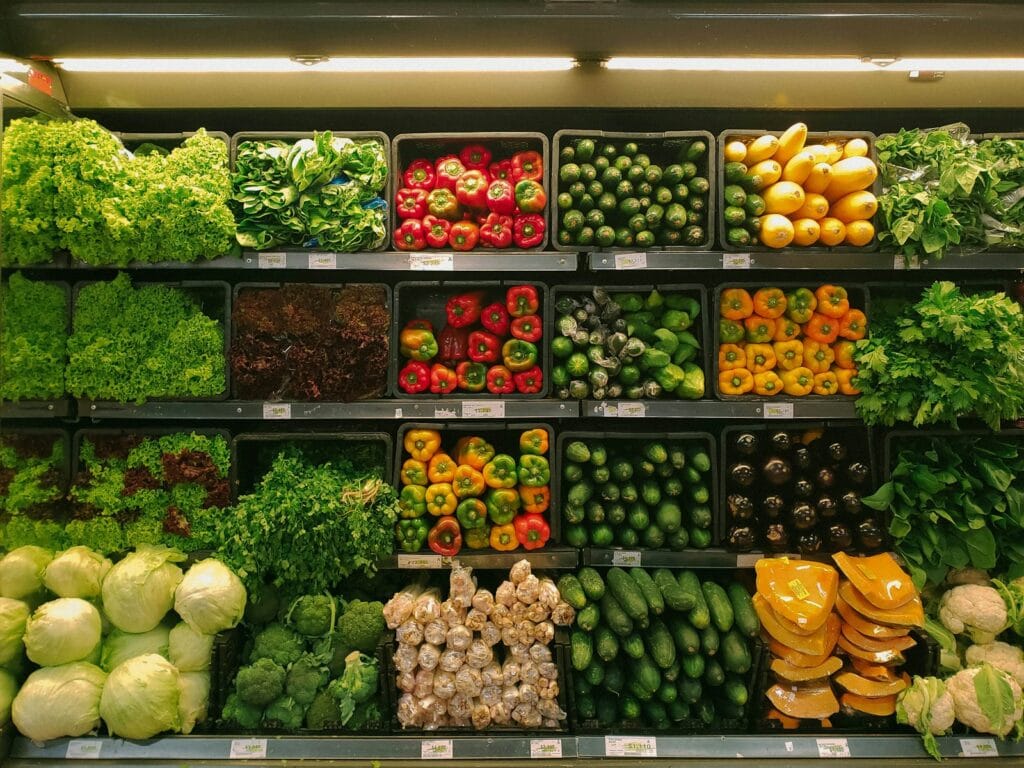Meal planning on a budget doesn’t have to mean eating bland or unhealthy food all the time. Honestly, a lot of folks overspend at the grocery store just because they don’t have a plan and end up tossing random stuff in the cart. With some simple meal planning, you could save up to $1,600 a year and still eat food you actually like.
You can seriously cut your grocery bill just by planning ahead, using up what’s already in your kitchen, and finding ways to make pricier items like meat and fresh produce go further. This approach helps you avoid tossing food and making those last-minute impulse buys that add up fast.
Whether you’re feeding a crowd or just cooking for yourself, budget meal planning gives you more control over both your wallet and your meals. You’ll figure out how to make weekly meal plans, shop smarter, and whip up affordable meals that people actually want to eat.
Getting Started With Meal Planning On A Budget
If you want to get serious about saving money on food, start with a realistic grocery budget, pick planning tools that work for you, and get familiar with the benefits of meal planning. These basics make the whole process a lot easier.
Setting A Realistic Grocery Budget
Your grocery budget should fit your income and how many people you’re feeding. Try tracking your food spending for a couple of weeks to see where your money really goes.
Most families spend about 10-15% of their income on groceries. For a family of four, that usually lands somewhere between $150 and $200 a week.
Weekly Budget Guidelines:
- Single person: $50-75
- Couple: $100-125
- Family of four: $150-200
- Large family (6+): $200-275
Write down your budget and try to stick to it. Save your receipts so you can check how you’re doing each week.
Take a look at old grocery receipts to spot patterns. Maybe you’re spending more on packaged snacks than you realized.
Try cutting your usual spending by 10-20% to start. That way, you don’t have to make drastic changes right away.
Selecting The Right Meal Planner Tools
You really don’t need fancy apps to get started. A regular notebook and pen work just fine.
Free Planning Options:
- Paper calendar or notebook
- Notes app on your phone
- Free printable meal planners online
- Basic spreadsheet
Paid Planning Tools:
- Meal planning apps ($3-10/month)
- Digital planners ($10-30 one-time)
- Specialized meal planning software
Pick whatever feels easiest for you. If you’re glued to your phone, maybe an app is best.
Make sure your meal planner has space for breakfast, lunch, and dinner. Add a grocery list section so you don’t forget anything.
Simple meal planning methods are usually best when you’re just getting started. You can always try new tools later.
Understanding The Benefits Of Budget-Friendly Meal Planning
Good meal planning can cut your food costs by 25-40% every month. Plus, you’ll waste less food and spend less time shopping.
Money-Saving Benefits:
- Fewer impulse buys
- Use up what you already have
- Only buy what you need
- Take advantage of sales and coupons
Time-Saving Benefits:
- Less time spent figuring out what to cook
- Grocery shopping goes quicker
- Fewer trips to the store
Planning ahead usually means you’ll eat healthier, too. Budget meal planning makes it easier to pick nutritious ingredients instead of pricey processed foods.
You’ll end up tossing less food, since you’re using things before they spoil.
It’s honestly less stressful knowing what’s for dinner every night. No more staring into the fridge at 6 PM, wondering what you can throw together.
Step-By-Step Guide To Budget Meal Planning
If you want to make meal planning work, start by checking what food you already have and make organized shopping lists. Plan your meals weekly or monthly and try to match them to your real-life schedule.
Evaluating Pantry, Fridge, And Freezer Inventory
Before you start planning, take a look at what you already have. Check your pantry for canned goods, grains, pasta, and spices that are still good.
Look in the fridge for fresh stuff like vegetables, dairy, and leftovers. Jot down what’s about to expire so you can use it first.
Don’t forget the freezer—meat, veggies, and prepared foods can be the base for a bunch of meals.
Make an inventory list:
- Proteins (chicken, ground beef, beans, eggs)
- Grains (rice, pasta, bread, oats)
- Vegetables (fresh, frozen, canned)
- Dairy products and expiration dates
- Pantry staples (oil, flour, spices)
Plan your first week’s meals around stuff that’s about to expire. This way, you waste less and spend less.
Creating An Effective Grocery List
A solid grocery list keeps you on track and helps you avoid overspending. Try organizing it by store sections like produce, meat, and dairy.
Write down exactly how much you need of each thing. It’s easy to overbuy if you’re not specific.
Tips for organizing your list:
- Group items by store layout (produce, meat, frozen)
- List exact amounts (2 lbs chicken, 1 bag rice)
- Note sale items and store brands
- Set a spending limit for each section
Check for store sales before you shop. Most stores post weekly ads online. Planning meals around what’s on sale can make a big difference.
Stick to your list in the store. Only grab extras if they’re a great deal on things you use all the time.
Incorporating Weekly And Monthly Meal Plans
A weekly meal plan gives you a clear idea of what’s for dinner each day, while a monthly plan helps you see the big picture. Start with one week at a time—it’s less overwhelming.
Write out breakfast, lunch, and dinner for each day. Add snacks if you need them. Keep meals simple on busy days and save more involved recipes for when you have extra time.
Weekly planning steps:
- Choose 5-7 dinner recipes
- Plan lunches using leftovers
- Pick easy breakfasts you can repeat
- Set aside a day for meal prep
Monthly plans help you buy in bulk and mix up your recipes. You can create a monthly plan by repeating your favorite weekly menus with a few tweaks.
Theme nights like “Meatless Monday” or “Taco Tuesday” make planning easier and help you buy in larger quantities for less.
Adapting To Your Schedule And Food Preferences
Match your meal plan to your actual routine. Plan quick meals for nights when you’re busy, and save bigger cooking projects for weekends.
Think about what your family likes and dislikes. There’s no point making meals no one wants to eat.
Things to consider:
- Work hours and commute
- Kids’ activities and school
- Days you’re too tired to cook
- When you have time to shop
Keep a couple of backup meals in mind for those days when everything goes sideways. Pasta or sandwiches can save the day.
Batch cooking is great if you have time on weekends. Make big batches of soup, casseroles, or grains to reheat later.
Adjust portion sizes based on your needs. Make more if you want leftovers, or less if you like cooking fresh each day.
Practical Strategies For Saving Money On Food
If you want to save big on groceries, focus on smart shopping, cutting waste, and cooking efficiently. These strategies can help you save 30% or more.
Shopping Sales And Comparing Prices
Keep an eye on store sales cycles. Most stores rotate deals every 6-8 weeks.
Ways to compare prices and save:
- Use store apps to check ads
- Compare unit prices, not just package prices
- Stock up when things are at their lowest price
Go for store brands when it comes to basics like flour, sugar, or canned goods. They’re usually just as good and cost way less.
Smart shopping strategies include splitting large packages across several meals. A big bag of carrots can easily stretch through a few dinners.
Organize your list by store layout. You’ll avoid impulse buys and make sure you get sale items first.
Maximizing Leftovers And Reducing Food Waste
Don’t just reheat the same leftovers—turn them into something new. Roast chicken one night can become soup, sandwiches, or salad topping the next.
Leftover tips:
- Use proteins in different recipes
- Make veggie scraps into homemade stock
- Freeze small portions before they go bad
Plan meals that use the same ingredients. One bunch of cilantro can add flavor to tacos, curry, and salad dressing.
Store produce the right way to make it last. Keep herbs in water, and wrap lettuce in paper towels before putting it in the fridge.
Planning to split items across multiple meals keeps your food budget in check and means less food gets tossed.
Utilizing Freezer Meals And Batch Cooking
Batch cooking on the weekend can fill your freezer with meals for later. Make big pots of soup, chili, or casseroles and freeze them in family-sized portions.
Why freezer meals help:
- Cuts down on pricey takeout
- Lets you use bulk ingredients efficiently
- Saves seasonal produce for later
When stuff goes on sale, prep a bunch at once. Chop onions, brown meat, or cook grains in bulk and freeze them.
Label everything in the freezer with what it is and when you made it. Most cooked meals are good for 2-3 months if stored right.
Double recipes for things that freeze well, like meatballs, muffins, or pasta sauce. You’ll thank yourself later when dinner’s already made.
Affordable Meal Ideas And Budget-Friendly Resources
Making affordable meals is all about simple recipes, the right tools, and knowing where to shop. Focus on staple ingredients, use tech to plan, and look for alternative ways to buy food.
Sample Cheap Meals And Recipes
Rice and beans are a classic budget-friendly meal combo. Something like a black bean and rice bowl with frozen veggies costs less than $2 a serving and still gives you plenty of protein.
Pasta dishes are super flexible and cheap. Spaghetti with marinara and frozen veggies is filling and comes out to about $1.50 per person. If you want more protein, toss in some canned tuna or eggs.
Soups stretch ingredients really far. Lentil soup with carrots, onions, and celery makes a big pot for under $5. You can whip up cheap meals on a budget with stuff most stores always have.
Good protein options:
- Dried beans and lentils
- Eggs
- Canned tuna
- Ground turkey
- Whole chickens
Breakfast for dinner is an easy way to save money. Pancakes, eggs, and oatmeal are filling and way cheaper than most dinner options.
Leveraging Budget Meal Planning Apps And Services
There are plenty of free apps to help you organize meal ideas without paying for a subscription. Many let you set a budget and make shopping lists based on local sales.
Popular free meal planning tools:
- Mealime
- PlateJoy (free version)
- Yuka
- BigOven
Some services have free meal plans for budget-friendly meal planning that come with shopping lists and prep tips. These can take the guesswork out of portion sizes and ingredients.
Grocery store apps like Kroger, Safeway, and Target send you alerts about sales and digital coupons. You can plan meals around the deals and get discounts right at checkout.
Coupon apps like Ibotta and Checkout51 give you cash back on stuff you were already planning to buy. Stack those savings with store sales for even bigger results.
Exploring Meal Kits And Online Marketplaces
Meal kits usually don’t work well for tight budgets. The prices are high, and shipping isn’t cheap either. Still, a few companies throw in discounted boxes for first-timers, so you can try out some new recipes without spending too much.
If you’re looking to save, you might want to skip the kits and just buy ingredients in bulk from online shops. Thrive Market, for example, has a bunch of organic and natural foods at wholesale prices. Sure, there’s an annual fee, but honestly, it often pays for itself if you shop there regularly.
Cost-Effective Online Food Sources:
- Thrive Market (bulk organic items)
- Amazon Fresh (bulk staples)
- Walmart Grocery (price matching)
- Costco Online (family-size portions)
Sometimes, local meal planning services are a better deal than the big national brands. If you check out community-supported agriculture programs or local food co-ops, you’ll probably find fresh, seasonal ingredients for less than what you’d pay at the store.
There are even some meal planning kits out there that are more about teaching you how to cook than just handing you pre-measured ingredients. These can help you whip up budget meals using stuff you pick up yourself, which can save a lot of money.




